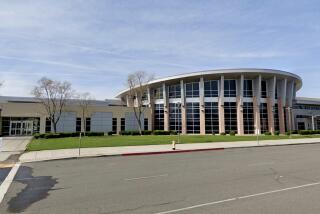Pilot knew ‘we’re gonna be in the Hudson’
- Share via
NEW YORK — The pilot of a crippled US Airways jetliner made a split-second decision to put down in the Hudson River because trying to return to the airport after birds knocked out both engines could have led to a “catastrophic” crash in a populated neighborhood, he told investigators Saturday.
Capt. Chesley B. “Sully” Sullenberger III said that in the few minutes he had to decide where to set down the powerless plane Thursday afternoon, he felt it was “too low, too slow” and near too many buildings to go anywhere else, according to the National Transportation Safety Board account of his testimony.
The pilot and his first officer provided their first account to NTSB investigators Saturday of what unfolded inside the cockpit of the Airbus A320, which late Saturday was hoisted from the water and onto a waiting barge.
Co-pilot Jeff Skiles, who was flying US Airways Flight 1549, saw the birds coming in perfect formation, and made note of it. Sullenberger looked up, and in an instant his windscreen was filled with big, dark-brown birds.
“His instinct was to duck,” said NTSB board member Kitty Higgins, recounting their interview. Then there was a thump, the smell of burning birds, and silence as both aircraft engines cut out.
The account illustrated how quickly things deteriorated after the bump at 3,000 feet, and the pilots’ swift realization that returning to LaGuardia or getting to another airport was impossible.
With both engines out, Higgins said, flight attendants described complete silence in the cabin, “like being in a library.” A smoky haze and the odor of burning metal or electronics filled the plane.
The birds had not been on the radar screen of the air traffic controller who approved the departure, Higgins said.
Returning to LaGuardia Airport, Sullenberger quickly realized, was out. So was nearby Teterboro Airport, which would require him to take the jet over densely populated northern New Jersey.
“We can’t do it,” he told air traffic controllers. “We’re gonna be in the Hudson.”
As the details of the river landing emerged Saturday, investigators in the late evening hoisted the airliner from the river onto a barge, exposing its shredded and torn underside. Parts of the plane appeared sheared off.
The NTSB said sonar teams may have located the sunken left engine of the plane.
Crews need to remove the cockpit voice and flight-data recorders and find that engine.
The investigation played out as authorities released the first video showing the spectacular crash landing. Security cameras on a Manhattan pier captured the plane as it descended in a controlled glide, then threw up a spray as it slid across the river on its belly.
The video also illustrated the swift current that pulled the plane down the river as passengers walked out onto the wings and ferry boats moved in for the rescue.
Authorities also released a frantic 911 call that captured the drama of the flight. A man from the Bronx called at 3:29 p.m. Thursday, three minutes after the plane took off.
“Oh my God! It was a big plane. I heard a big boom just now. We looked up, and the plane came straight over us, and it was turning. Oh my God!” the caller told 911.
At almost the same moment, the pilot told air-traffic controllers that he would probably “end up in the Hudson.”
NBC said “Today” show host Matt Lauer would interview Sullenberger from Washington on Monday.
Experts say the threat that birds have long posed to aircraft has been exacerbated by two new factors over the past 20 years: Airline engines have been designed to run quieter, meaning that birds can’t hear them coming, and many birds living near airports have given up migrating because they find the area hospitable year-round.
The US Airways flight hit the birds at 3,000 feet, the NTSB says. That caused a total engine failure, and the plane hit the river 3 1/2 minutes later.
“Brace! Brace! Head down!” the flight attendants shouted to the passengers.
Then they were in the water.
The plane came to a stop. The captain gave a one-word command, “Evacuate.”
More to Read
Sign up for Essential California
The most important California stories and recommendations in your inbox every morning.
You may occasionally receive promotional content from the Los Angeles Times.










